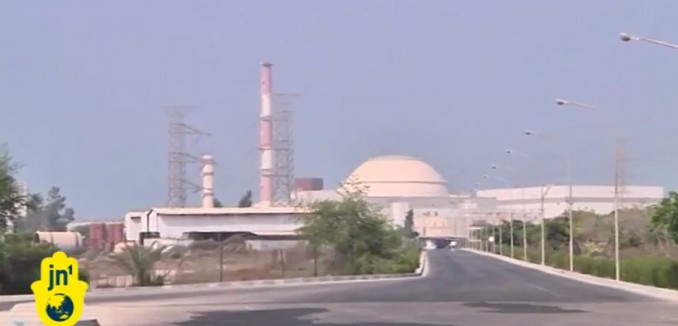According to the draft of a secret side deal negotiated between Iran and the International Atomic Energy Agency (IAEA), Tehran will play a significant role in inspecting the military facility and suspected nuclear site at Parchin, the Associated Press (AP) reported today. Although this is a draft agreement, the AP’s sources confirmed that it doesn’t differ from the final deal.
1. Iran will provide to the Agency photos of the locations, including those identified in paragraph 3 below, which would be mutually agreed between Iran and the Agency, taking into account military concerns.
1. Iran will provide to the Agency videos of the locations, including those identified in paragraph 3 below, which would be mutually agreed between Iran and the Agency, taking into account military concerns.
1. Iran will provide to the Agency 7 environmental samples taken from points inside one building already identified by the Agency and agreed by Iran, and 2 points outside of the Parchin complex which would be agreed between Iran and the Agency.
The text of the agreement, called Special Arrangement II, reveals that Iran will provide the IAEA with photographs, videos and environmental samples from locations in Parchin specified by the IAEA and agreed to by Iran. The evidence will be collected using Iran’s “authenticated equipment,” and the Director General of the IAEA, Yukiya Amano, will be invited to Parchin as a “dignitary guest.”
The terms of the deal are consistent with yesterday’s AP report that Iran will be allowed “to employ its own experts and equipment in the search for evidence” of its past illicit nuclear research.
Amano has argued that the agreement is “consistent with our long-established practices” and doesn’t “compromise our safeguards standards in any way.”
However, an analysis of the deal prepared by the AP shows that the arrangement marks a departure from past practices by giving Iran significant control over the inspection process.
Any IAEA inspection of a country suspected of nuclear irregularities is usually carried out by agency experts. They may take swipes of residue on equipment, sample the air or take soil samples in attempts to look for signs of clandestine work on atomic arms or other potentially dangerous unreported activity.
The document on Parchin, however, will let the Iranians themselves look for signs of the very activity they deny – past work on nuclear weapons. It says “Iran will provide” the agency with environmental samples. It restricts the number of samples at the suspect site to seven and to an unspecified number “outside of the Parchin complex” at a site that still needs to be decided.
The U.N. agency will take possession of the samples for testing, as usual. Iran will also provide photos and video of locations to be inspected. But the document suggests that areas of sensitive military activity remain out of bounds. The draft says the IAEA will “ensure the technical authenticity of the activities” carried out by the Iranians – but it does not say how.
The AP analysis also cited the former deputy director-general of the IAEA, Olli Heinonen, who said that he can’t recall a similar arrangement where a suspected nuclear violator was permitted to be so involved in investigating itself.
According to Israeli security expert Ely Karmon, the same flaws that allowed Syria to cheat on its agreement to remove all chemical weapon stockpiles also affect the nuclear deal with Iran. Last month, Karmon wrote:
If this is the record of the international community in dismantling and monitoring the chemical and nuclear facilities in Syria, how exactly it will do better in monitoring the vast Iranian nuclear infrastructure? Would indeed Iran, the cat guarding the milk, be responsible for collecting its own soil samples from suspected nuclear sites to turn over to the IAEA for inspection, as revealed during the first Senate Foreign Relations Committee hearing on the nuclear deal?
Understanding the extent of the research that Iran conducted in Parchin and addressing its possible military dimensions (PMD) is essential to establishing the full scope of Tehran’s nuclear program and making the agreement verifiable. Omri Ceren, The Israel Project’s managing director for press and strategy, wrote last year, “PMD-related transparency is seen as not just another issue – say, one that Iran could refuse to trade away by making concessions in other areas – but as a prerequisite to verifying Iranian compliance across all issues.” The Israel Project publishes The Tower.
[Photo: JewishNewsOne / YouTube ]




